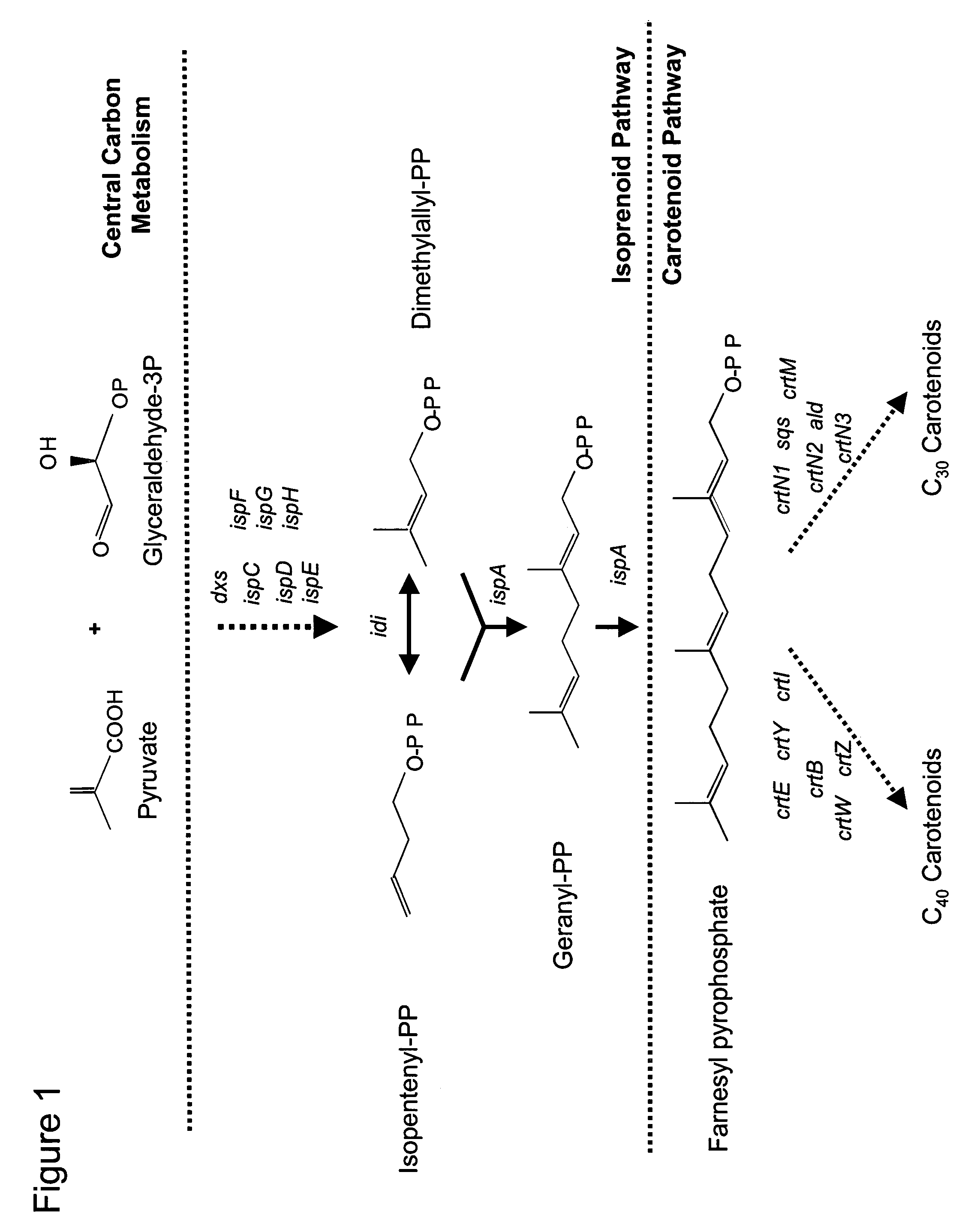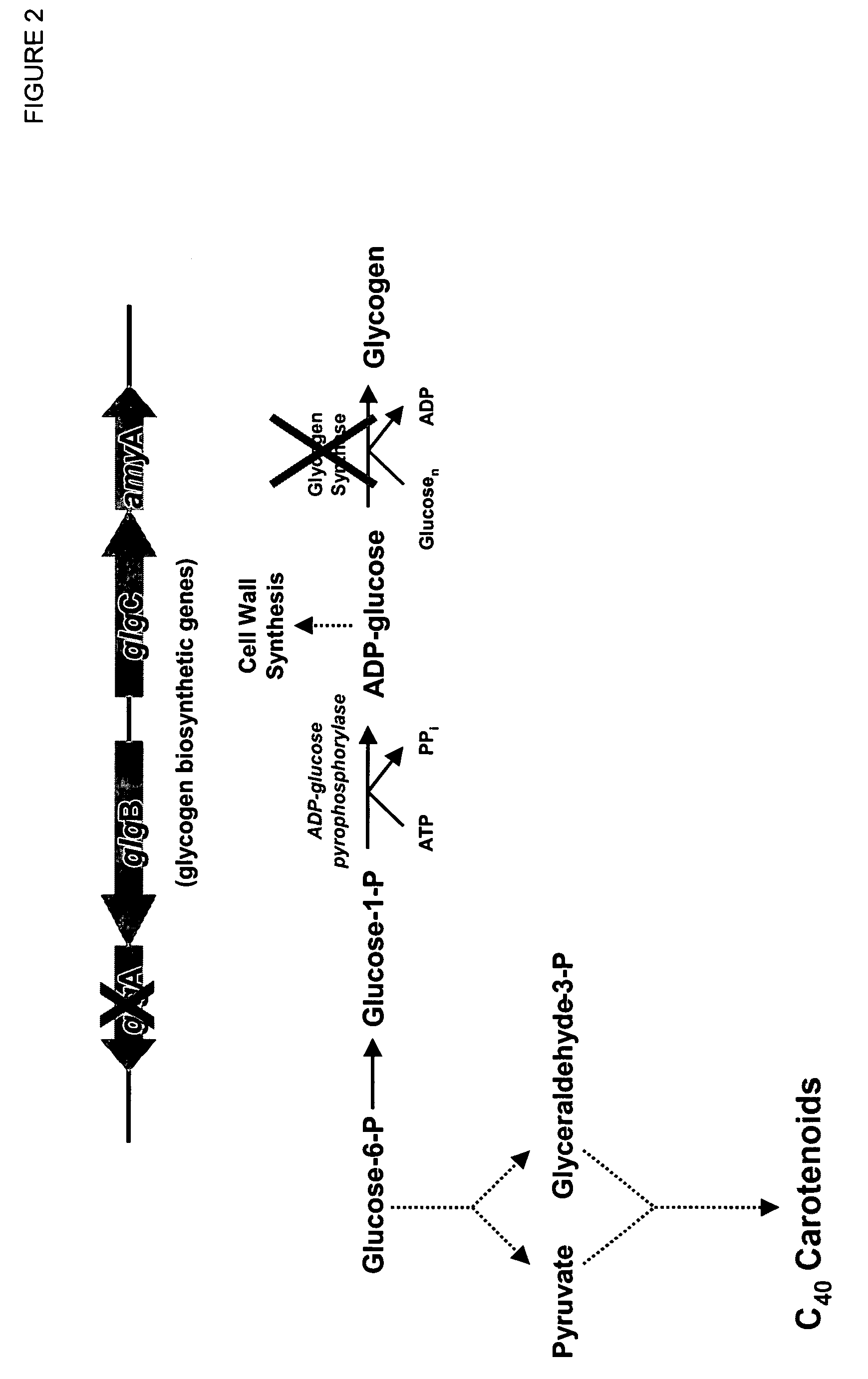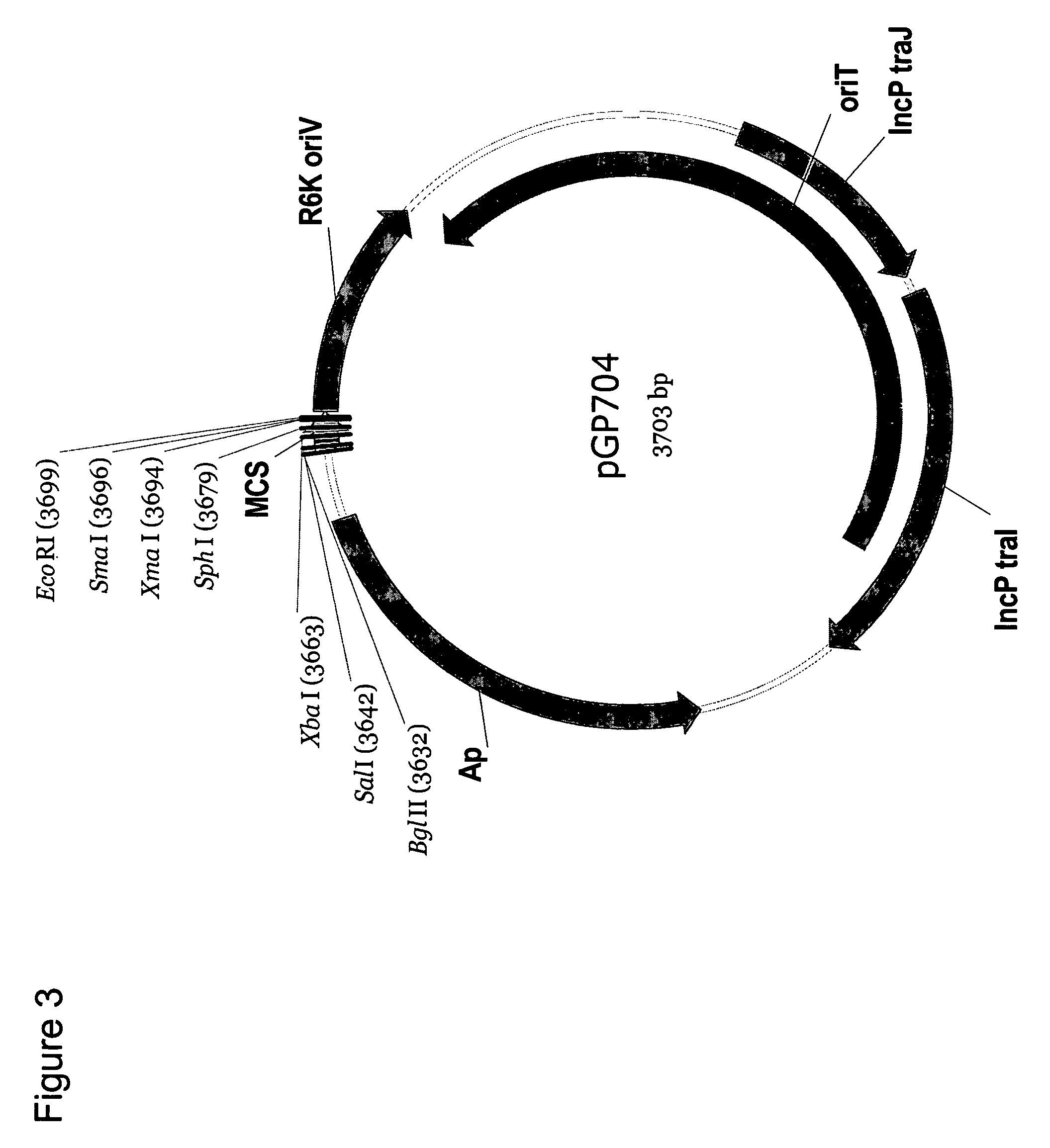Method to increase carotenoid production in a microbial host cell by down-regulating glycogen synthase
a glycogen synthase and microbial host cell technology, applied in the field of microorganisms and molecular biology, can solve the problem that animals cannot synthesize carotenoids de novo, and achieve the effect of increasing carotenoid production and increasing carotenoid production
- Summary
- Abstract
- Description
- Claims
- Application Information
AI Technical Summary
Benefits of technology
Problems solved by technology
Method used
Image
Examples
example 1
Growth of Methylomonas Sp. 16a
[0227]Example 1 summarizes the standard conditions used for growth of Methylomonas sp. 16a (ATCC# PTA-2402) and derivatives thereof, as described in U.S. Pat. No. 6,689,601; hereby incorporated by reference.
Methylomonas Strain and Culture Media
[0228]The growth conditions described below were used throughout the following experimental Examples for treatment of Methylomonas sp., unless conditions were specifically described otherwise.
[0229]Methylomonas sp. was typically grown in serum stoppered Wheaton bottles (Wheaton Scientific; Wheaton, Ill.) using a gas / liquid ratio of at least 8:1 (i.e., 20 mL of ammonium liquid “BTZ” growth medium in a Wheaton bottle of 160 mL total volume). The composition of the BTZ growth medium is given below. The standard gas phase for cultivation contained 25% methane in air, although methane concentrations can vary ranging from about 5–50% by volume of the culture headspace. These conditions comprise growth conditions and the...
example 2
Construction of a Positive-Selection Suicide Vector
[0233]The construction of chromosomal mutations within the Methylomonas or E. coli genome was accomplished through the use of suicide vectors. Thus, a modified version of the conditional replication vector pGP704 was created, comprising a npr-sacB cassette (SEQ ID NO: 1). Preparation of the pGP704-sacB integration vector backbone has previously been described (U.S. Ser. No. 10 / 997,844; hereby incorporated by reference).
pGP704 as a Vector Backbone for Use as a Chromosomal Integration Vector.
[0234]The plasmid pGP704 (Miller and Mekalanos, J. Bacteriol., (170): 2575–2583 (1988); FIG. 3) was chosen as a suitable vector backbone for use as a chromosomal integration vector for Methylomonas sp. 16a and E. coli MC1061, since it could be used as a vehicle to transfer replacement nucleotide sequences of interest (re-NSI) via conjugation. Plasmid pGP704 is a derivative of pBR322 that is AmpR (ampicillin resistance) but has a deletion of the pB...
example 3
PCR Amplification and Cloning of the Methylomonas glgA DNA Fragments into pGP704::sacB
[0258]For amplification of the subsequent PCR fragments [glgA deletion fragment #1 (˜1.2 kb; SEQ ID NO: 8) and glgA deletion fragment #2 (˜1.1 kb; SEQ ID NO: 9), the following DNA primers (Table 5) were used. The PCR reaction mixture was composed of the following: 5 μL of 10× MasterAmp™ Taq PCR buffer (Epicentre® Biotechnologies, Madison, Wis.); 4 μL (1 μL each) of dNTPs (10 mM stock); 1 μL of Methylomonas 16a (ATCC PTA-2402) chromosomal DNA solution (˜500 ng / μL); 4 μL of MgCl2 solution (25 mM); 15 μL MasterAmp™ 10×PCR Enhancer (3× final concentration), 0.25 μL MasterAmp™ Taq DNA Polymerase (5 U / μL) (Epicentre®), 1 μL of each primer pair [BglII / glgA (deletion) #1 (SEQ ID NO: 10)+XbaI, SpeI, MluI / glgA (deletion) #1 (SEQ ID NO: 11) or MluI, SpeI / glgA (deletion) #2 (SEQ ID NO: 12)+XbaI / glgA (deletion) #2 (SEQ ID NO: 13)], and sterile water (added to achieve a final volume of 50 μL). The PCR protocol w...
PUM
| Property | Measurement | Unit |
|---|---|---|
| temperature | aaaaa | aaaaa |
| temperature | aaaaa | aaaaa |
| temperature | aaaaa | aaaaa |
Abstract
Description
Claims
Application Information
 Login to View More
Login to View More - R&D
- Intellectual Property
- Life Sciences
- Materials
- Tech Scout
- Unparalleled Data Quality
- Higher Quality Content
- 60% Fewer Hallucinations
Browse by: Latest US Patents, China's latest patents, Technical Efficacy Thesaurus, Application Domain, Technology Topic, Popular Technical Reports.
© 2025 PatSnap. All rights reserved.Legal|Privacy policy|Modern Slavery Act Transparency Statement|Sitemap|About US| Contact US: help@patsnap.com



